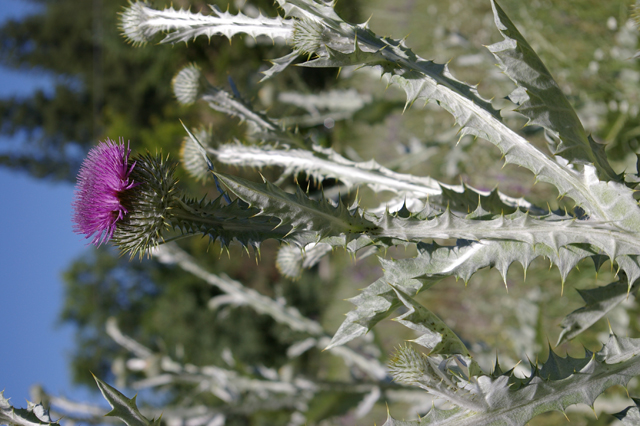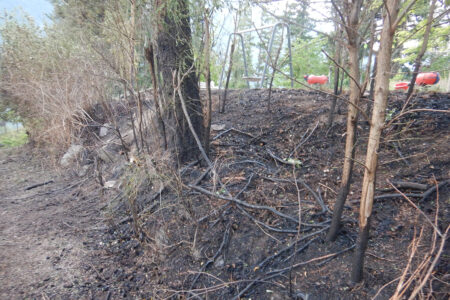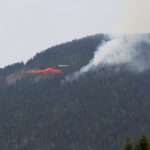Invasive plants — Scotch Thistle
Invasive plants are everywhere and slowly choking out the ecosystem. Today, Jen Haynes, Education Coordinator for the Boundary Invasive Species Society writes about Scotch thistle and how to control this plant native to overseas.
Scotch thistle is native to Europe, North Africa and Asia.
It has several names including Cotton thistle and Spear thistle. Its Latin name Onopordum acanthium means ‘thorny plant eaten by donkeys’. It was introduced in North America in the late 1900s as an ornamental. It crowds out native species and crops. It can create an impenetrable barrier that no animal would ever consider challenging. It can spread rapidly, is drought tolerant, and will grow pretty much anywhere.
It is a biennial which produces a large rosette of spiny leaves with a taproot that may extend down 30 cm or more the first year. In the second year the plant grows 0.5 to 3 m tall with a width of up to 1.5 m. The leaves are 10-50 cm wide, are alternate and spiny, often covered with white woolly hairs and the lower surface more densely covered than the upper. The leaves are deeply lobed with long stiff spines along the margins. Fine hairs give the plant a greyish appearance. The massive main stem may be 10 cm wide at the base and is branched in the upper part. Each stem shows a vertical row of broad, spiny wings, typically 2-3 cm wide, extending to the base of the flower head. The flowers are globe shaped, 3-5 cm in diameter, from dark pink to lavender, and are produced in the summer. The flower buds form first at the tip of the stem and later at the tip of the axillary branches. This thistle can produce anywhere from 8,400 to 40,000 seeds per plant. These seeds can remain viable in the soil for up to 20 years!
Small infestations can be dug up but you need to get at least 7 cm of the root. Cutting during early flowering will not kill the plant but it will help reduce the seed produced. If you cut it after it has already started to produce seed you should bag up the heads and take them to the landfill. Scotch thistle can be effectively treated with herbicides. Planting native perennial grasses to compete with the thistle is helpful but needs other control methods to make it work.
A combination of control methods is the most effective way to go. It’s also important to continue to monitor any Scotch thistle sites.
For more information on this and other invasive plants please the Boundary Invasive Species Society at boundaryinvasives@gmail.com, 250-446-2232, Facebook or www.boundaryinvasives.com.






















